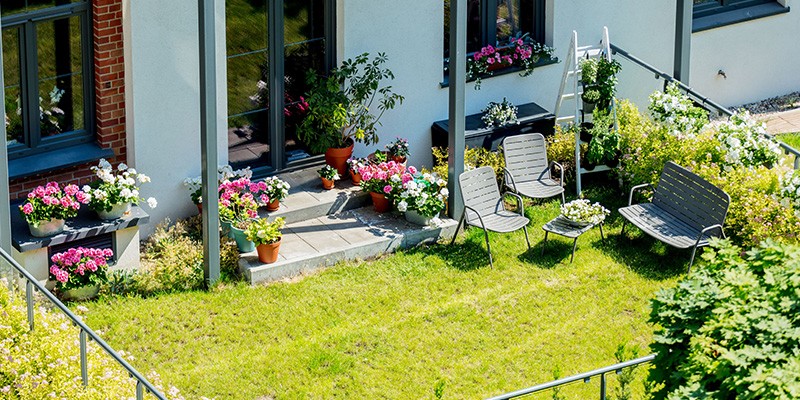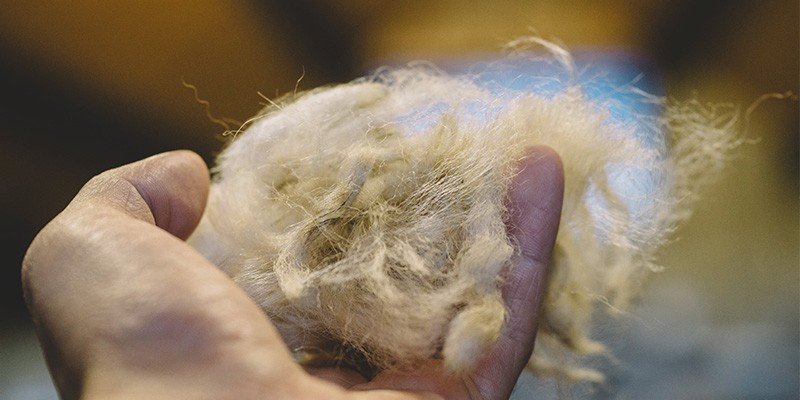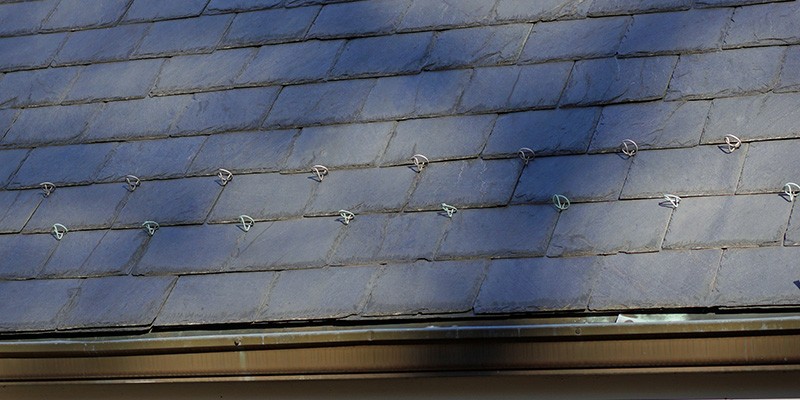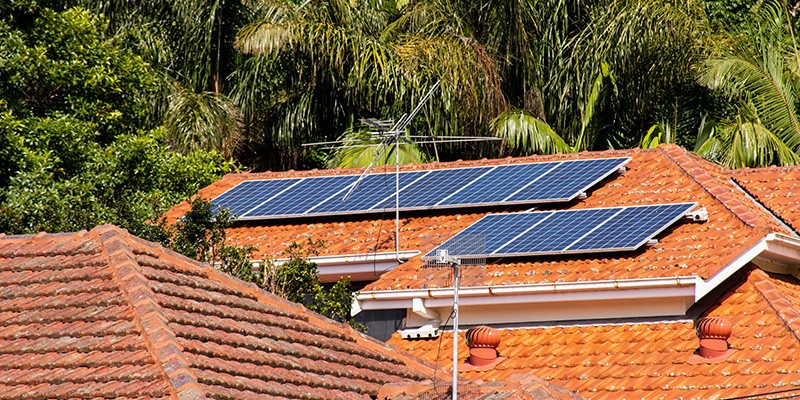7 Eco-Friendly Materials to Modernise Your Roof

Make no mistake, sustainable materials will always be an investment. Not just for the planet, but for ourselves as well. Many of the materials below, including cold and green roofs, can significantly lower our home's running costs leading to big savings on energy year on year.
__________________________________________________________________________________
With recorded carbon emissions at their highest point in history, It is all the more important that we look towards more sustainable means of living. The roofing industry is not exempt from this coming change, with more and more manufacturers working on low-emission materials that still perform well.
A lot of products on the market have been labelled ‘environmentally friendly’, and it can be difficult to know which ones truly do make a difference without reading the small print or consulting an expert. In this guide, we take a look at 7 eco-friendly roofing materials that will help you to create a more sustainable roof, and thus a more environmentally-sound building overall.
Contents
Before we get into the products you place on top of the roof, let’s first take a look at insulation. This can be a controversial subject when it comes to environmental impact, with many artificial materials producing harmful emissions as they are manufactured. Not only this but these types of materials can also take a long time to biodegrade and can be harmful to your health if handled directly.
Natural wool insulation is a vastly different approach. Unless you have an allergy to wool (which would make you a very rare case indeed), this natural alternative is much safer. Being a completely natural by-product of sheep that are reared for wool production it also greatly reduced your carbon footprint.
Most sheep’s wool ends up in the fashion industry, but there are strict guidelines and regulations that this wool needs to meet in terms of its appearance. A lot of sheep’s wool is perfectly usable and safe but is rejected because it doesn’t look the part for our fleeces, jackets or cushions. There are no such limitations when it comes to insulation, meaning any and all sheep’s wool can be used for it, reducing waste considerably.
Natural wool insulation is also better for your health and is installed in the same way as mineral wool. It is still a good idea to wear protective breathing equipment to be on the safe side, however, and to recycle the wool at the end of its lifespan, which can reach an incredible 60 years without issues.
This longevity only adds to the wool’s impressively low carbon footprint as you won’t need to replace the wool as often.
Rubber roofs aren’t known for being eco-friendly, quite the opposite in fact. With it taking anywhere up to 100 + years to decompose naturally, the material makes for a mainstay of landfills. However, this durability (far in excess of clay or slate) does have some perks.
Lasting as long as it does reduces the need for regular replacement of other artificial and emission-heavy materials. Better yet, some rubber can also be reused and recycled repeatedly at the end of its life.
As for its actual performance as an option for flat roofing, you’ll also be pleasantly surprised. Not only is it simple to install, but the single-layer design makes it far more able to resist water and mould ingress.
Slate has been around for centuries, and there was a point where entire communities in the UK were built on producing slate. It may surprise you to know that, despite its age, slate remains one of the most energy-efficient roofing materials on the market. It is also completely non-toxic, making this tile ideal for those looking to create more sustainable roofs.
Slate can keep shape and perform well for over a century if it is cared for properly. This means that you may never have to worry about replacing a slate roof again if you are the one that has installed it. However, maintenance is important, and making sure that it is kept clean is vital if you wish for it to last this long.
Even if it does require replacing, slate can be recycled easily without causing pollutants to enter the air.
Clay is one of the oldest building materials on earth - with tiles having been produced for well over two thousand years, predating much of the industrial machinery that has played a large part in the warming of our climate.
This is not to say that clay tile production is completely harmless – far from it – but it certainly has less of an effect on the environment than many alternatives, especially those that only appeared in the last century, which tend to use extremely harmful materials such as tar.
Clay has a lot in common with slate; it has a lengthy lifespan, able to last for well over a century in the right conditions. They can also be recycled very efficiently, using a method that causes minimal pollution.
There is great potential for visual diversity when it comes to clay roof tiles, meaning you’re sure to find the right set of tiles to suit the aesthetics that you’re aiming for.
Green roofs are a recent favourite amongst many architects and home designers who have turned their focus to sustainability. These roofs let you turn your entire roof into a self-sustaining ecosystem. Complete with various flowers and grasses that help to create an environment for all manner of animal life that would otherwise struggle to survive in more urbanised environments.
There is no better time to look at installing a green roof – the technology involved in creating them has come leaps and bounds in recent years. The trays and other accessories that are crucial in their functionality have been produced to ensure that a green roof can thrive without threatening the structure of your building.
Other benefits include improved air quality and reduced energy consumption as the greenery helps to improve your roof's thermal insulation. If this wasn't enough, green roofs are also starting to show signs of increasing property values – particularly if they incorporate a spot of leisure.
Solar Tiles or Solar Shingles are the result of building-integrated photovoltaics, also known as BIVPs. They are essentially solar panels that have been combined with single-like roofing materials that allow you to draw power from the sun and cut down on your electricity bill.
Solar tiles and shingles are still an emerging technology and, as things stand, are quite a significant investment. Whilst many options are as efficient as solar panels, very few are more so meaning your savings will be roughly the same.
Add to this that Solar tiles/shingles require your whole roof to be replaced and you may find typical panels to be the better solution.
Of course, that is only as it stands now. Over in the US, solar tiles and solar shingles are slowly creeping up in popularity and have already shown room for a great deal of development. Whilst they are not the average homeowner's cup of tea just yet, they are definitely something to keep your eye on.
Cool roofs can be game changers in the summer as a way to combat consistently rising temperatures.
Normally, roofs tend to absorb heat from the sun, making the inside of your home warmer than it already is. This is alongside the fact that heat tends to rise; the result is that the rooms higher up in buildings, including high-rise flats or lofts conversions, get unbearably warm during the summer months.
Cool roofs utilise a newly designed reflective coating that can effectively reflect heat away from your roof instead of allowing it to be absorbed. While this technology has been around for a few years, only recently has it started to advance. The coating also works to prevent your roof from receiving various symptoms of sun damage.
As you can see, there is no shortage of materials to make your home more sustainable. From rubber roofs, natural insulation and solar tiles. Thanks to innovation after innovation these last few years, these materials are only likely to improve with time.
If you have any questions about what we’ve explored here, then don’t hesitate to get in touch with our award-winning customer service team on 01295 565 565 or chat with us directly using the box below. We’ll be more than happy to answer any questions you may have, as well as guide you to a product that may help with your next project.


